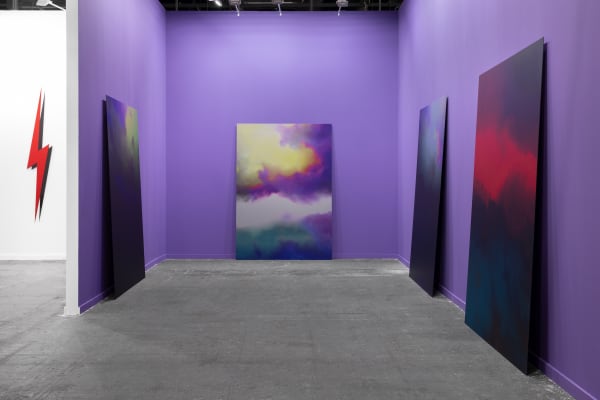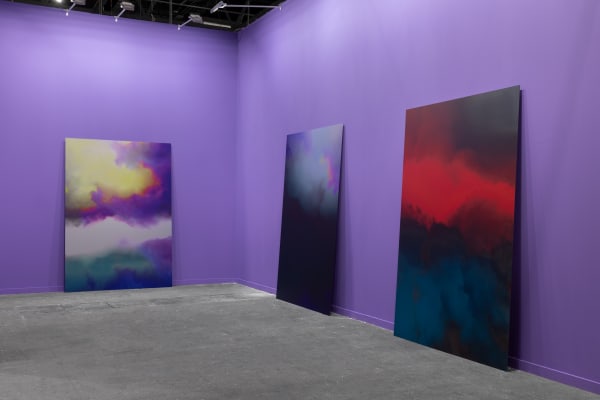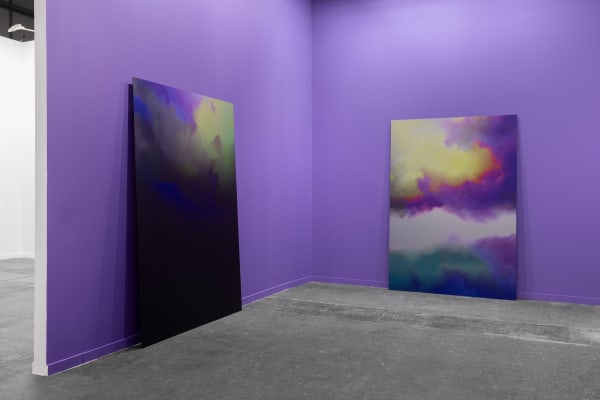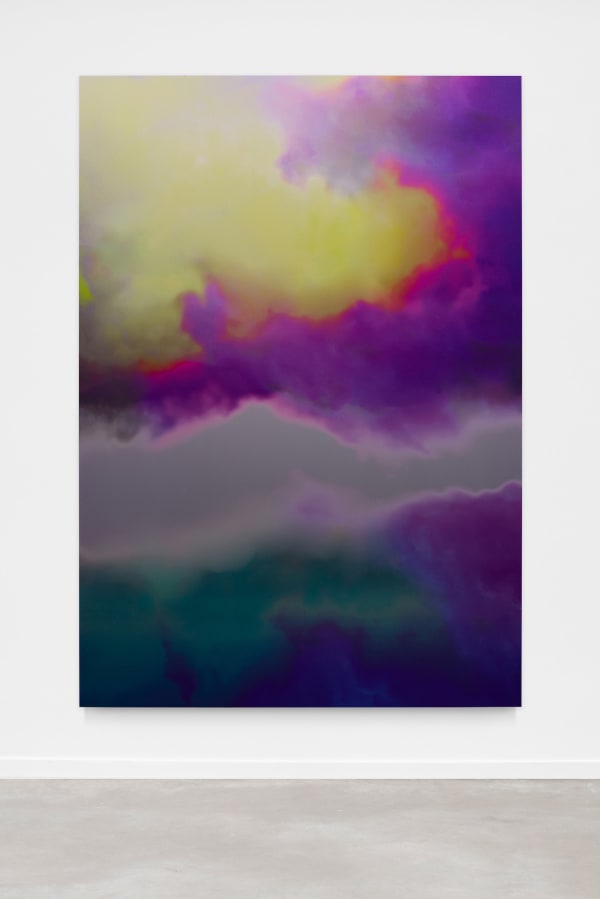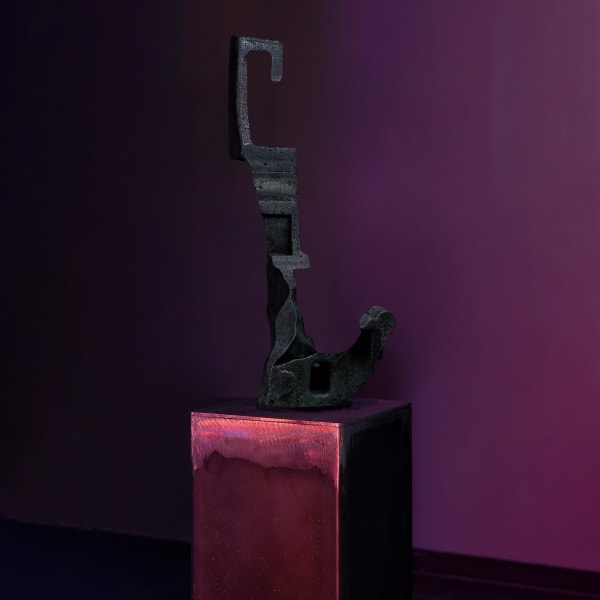In his latest project, Karlos Gil has visited the place where the Eurasian and American plates collide in Akureyri (Iceland) to visit several hydrothermal volcanoes, vestiges of the origin of microcellular life and recently the destination of organizations such as NASA to study their composition and connections with the origin of life. Deep in Iceland, where daylight never reaches, these abyssal volcanoes emit steam in a landscape hidden from human perception. They are thresholds to the abyss, zones of geological transformation that challenge the relationship between the solid and the ethereal.
Karlos has worked with a group of experienced divers in the depths of the Eyjafjörður fjord to represent the activity of these deep-sea volcanoes from within. The images obtained are reproduced using large-format heliographs using specific times of day to generate a wide spectrum of light colors on the surface. The representations of smoke clusters are mixed with some colors produced by the wave differences of the Icelandic sky when printing on steel and bronze plates. In this way, the dark and abyssal bottom of the Arctic Ocean is only revealed by sunlight, the material that cannot touch these volcanoes. These images are initially linked to the exterior, being really a representation of the depths of the ocean. However, these images do not emerge from darkness but from the sun. Heliography, one of the first photographic techniques of the 19th century, inscribes the presence of light in matter, allowing the invisible to become an image. Thus, paradox becomes the axis: how to capture what has not been seen, how to shape a landscape of shadows with the oldest light?
These photographs are vestiges of a suspended time, where geology meets science fiction, where the primitive dialogues with the speculative. Heliography, in its archaic quality, becomes a ghostly technology, as if a remote observer had recorded these craters from an uncertain future. What emerges is not only a geological testimony, but an alternative vision of the Earth's memory: an archive of possible worlds inscribed in sulphur and ash.
The title of the project, NEO GEO, is camouflaged in a new sculpture of the Phantom Limbs series that the Spanish artist has been developing since 2015. For the production of these sculptures, Gil have made molds of the packaging normally used for the storage of electronic devices and household appliances. The foams of this packaging adapt ergonomically to the surfaces of the devices to protect them from possible impacts during transport, and it is precisely on this idea of ergonomics that I focus my formal research on it. Gil transformed the reading of these foams —normally thrown in the recycling bin—, by casting them with noble metals used in the past for making durable stuff like silver, gold or copper. For this occasion, Karlos has used the mold of a NEO GEO video game console from the 90s to make the last bronze casted sculpture.
These metals have different patinas in order to change their colors over time and nearly every piece is scored with deep, straight, alien lines. In this physical translation, images are generated in the negatives, the cavities and the interstices, and look more like relics—something that remains, what's left over—standing like alien devices, weirdly sensual and creaturely. The connection between technologies of different times is something that interests him since the original molds are intended to protect technological instruments that are linked to a certain idea of progress despite the fact that many of them are programmed to be technologically obsolete. Here, again, there is a conflict between different intensities or speeds, a moment where time collapses itself and I always like to incorporate that layer in his works.
Madrid, Spain

